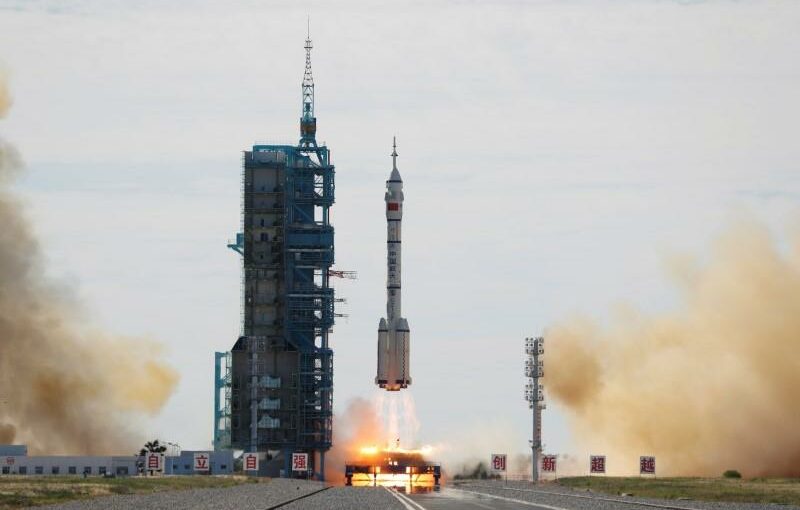JIUQUAN, China (Reuters) -Three Chinese astronauts on Thursday flew to an unfinished space station in China’s first crewed mission since 2016, expanding the country’s already growing near-Earth presence and challenging U.S. leadership in orbital space.
The astronauts rode to Tianhe – the module that will be the living quarters of China’s completed space station – on Shenzhou-12, or “Divine Vessel”. The crew boarded the module, where they will live for three months, the longest stay in low-Earth orbit by any Chinese national.
China’s space station, due to be finished by end-2022, will be the only alternative to the two-decade-old, U.S.-led International Space Station (ISS), which may be retired in 2024.
If the ISS – backed mainly by the United States, Russia, Japan, Europe and Canada – is decommissioned, China would be the operator of the only active space station. That would potentially give it greater power in shaping future norms and regulations for near-Earth space, which is already teeming with Chinese satellites.
“At this current stage, we haven’t considered the participation of international astronauts, but their future participation will be guaranteed,” said Zhou Jianping, chief designer of China’s manned space programme.
“I’m aware that many countries have expressed their wish in this regard,” Zhou told foreign reporters at the Shenzhou launch site in northwestern Gansu province.
Shenzhou-12 is the third of 11 missions – four of which will be crewed – needed to complete China’s first full-fledged space station. Construction began in April with the launch of Tianhe, a cylinder-like module slightly bigger than a city bus.
Related Coverage
The Shenzhou-12 astronauts Nie Haisheng, 56, Liu Boming, 54, and Tang Hongbo, 45, will test out technologies on Tianhe including its life-support system. They will also be monitored for how they fare in space physically and psychologically. An upcoming mission to the space station will last six months.
Barred by U.S. law from working with NASA and by extension on the ISS, China has spent the past decade developing technologies to build its own space station, in addition to planning missions to the moon, Mars and other planets.
China plans to allow Hong Kong astronauts to join future missions, Zhou also said.
‘FIRST BATON’
“This will be the first crewed flight in the space station (construction) phase, and I’m lucky to be able to have the ‘first baton’,” Nie told reporters a day before the launch.
The veteran astronaut has been hailed by his team as a bastion of stability and a teacher figure who constantly challenges others with tough questions.
“As long as we have him in our hearts, we have nothing to fear,” fellow astronaut Wang Yaping, who is part of the Shenzhou-12 backup team, told state media previously.
“In our crew, elder brother Nie is like the needle that stills the sea,” she said.
Liu Boming, like Nie, was from the first batch of astronauts selected in the 1990s for China’s space programme.
Known for his intellect, Liu is often addressed by his colleagues as “Little Zhuge”, the renowned military strategist who lived in China two millennia ago.
On the Shenzhou-7 mission in 2008, Liu famously used a crowbar to pry open the hatch after it refused to open.
Former air force pilot Tang Hongbo, 45, was from a later batch of astronauts, and trained for more than a decade before being selected for his first spaceflight on Shenzhou-12.
“I’ve waited for 11 years, and finally I’m ready, and I can contribute my strength,” Tang told reporters on Wednesday.
Since 2003, China has launched six crewed missions and sent 11 astronauts into space, including Zhai Zhigang, who carried out China’s first space walk ever on the 2008 Shenzhou mission.
Source: Read Full Article
